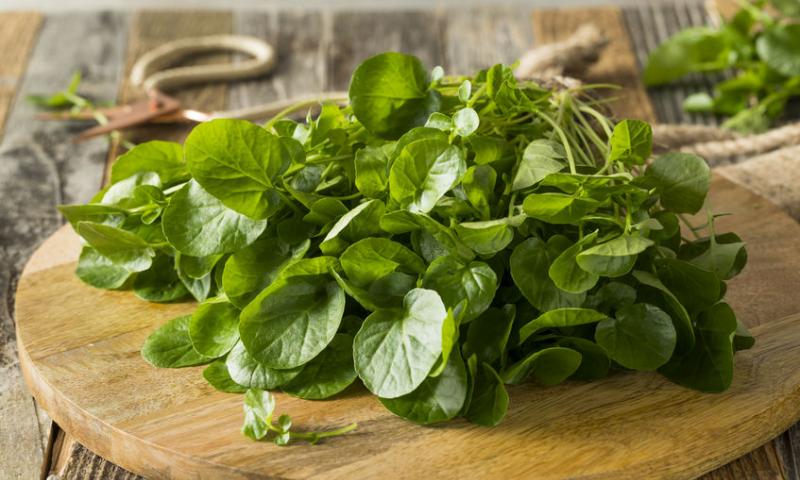 />
/>
COMMON NAME: Watercress
LATIN NAME: Nasturtium Officinale
CHINESE NAME: Xi Yang Cai
ORIGIN: Europe and Asia
HABITAT: Europe and Asia. It grows along the banks of the rivers, near streams and springs, sometimes in slowly flowing water, less often in swamps.
BOTANICAL INFORMATION: Watercress (lat. Nasturtium officinale) is a species of the female genus (lat. Nasturtium) of the cruciferous or cabbage family (Cruciferae, or Brassicaceae). The genus includes six species, growing mainly in Eurasia, Northern and Eastern Africa and North America. Watercress is cultivated in Western Europe and the USA.
Watercress is a perennial plant, reaching the height of 60 cm or more. A moisture-loving, relatively cold-resistant and shade-tolerant plant. The stem is hollow, creeping, usually rooting at the base. The leaves are green, simple, without stipules, pinnate, with wide petioles and 2-7 pairs of oblong or oval leaves. The flowers are small, white, two-sidedly symmetric, arranged in short racemes. There are 6 stamens , 2 of them are short and 4 are long, nectaries are located at the base of the stamens. The fruit is a pod. It blooms in May - August.
CHEMICAL COMPOSITION: The chemical composition of Watercress is studied quite well. Flavonoids mainly apigenin, luteolin, kaempferol, myricetin, hesperetin, narigenin, quercetin, anthocyanins were found in the aerial part and fruits of Watercress. In the aerial parts and roots there were found glucosinolates (gluconasturcin, glucobrassinocin, neoglubrabrassitsin, etc.). Watercress contains other nitrogen-containing compounds (phenylpropionitrile, phenylacetonitrile, etc.). Seeds are rich in fatty acids (oleic, linoleic, erucic, palminto, sterol, linolenic) and fatty oils. There are up to 24% of them.
HISTORY:
Watercress has been introduced into culture since the Middle Ages. In many countries, in particular France, Germany, Canada and the USA, this is a widespread garden green. In the 17th century, special artificial reservoirs were even built for the Watercress. In England, Watercress was introduced to the culture in the XIX century, and then in many other countries. It was first cultivated by gardener Wilhelm Bradbury in 1808 from Kent. He grew his crop on the banks of the Ebbsflitskaya River. Since then, this herb has spread to other counties in the UK: Hertfordshire, Hampshire, Wiltshire and Dorset. Now Watercress can be found on the shelves of supermarkets in England and some other European countries. Festivals are held in honor of this plant in the city of Alresford. Even the railway line was called in honor of Watercress.
As it is known, Watercress is cultivated in different regions, but a special love for this plant belongs to people from Europe and the USA.
There is even exists the so-called “cress capital of the world”. It is in the state of Alabama, the USA.
Today, the city of Oviedo, Florida in the United States is considered to be the capital of cress, and for the British, Alresford remains their capital of the cress.
*This article is for informational purposes only. We suggest consulting a physician before using these or any other herbal supplements.
